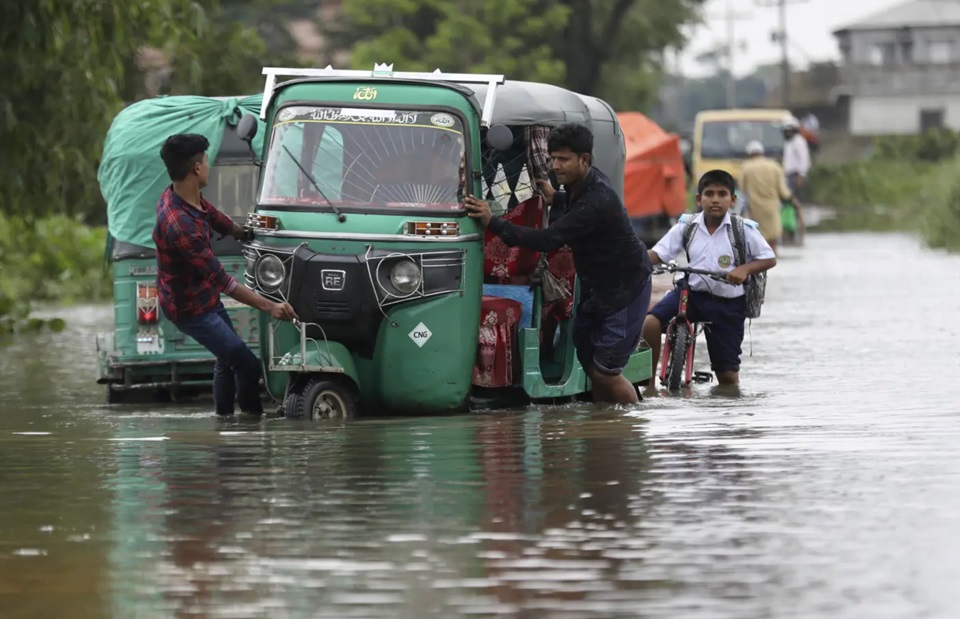COP28: The UN’s net-zero food plan to save the 1.5-degree goal, combat climate ‘doomisim’
UN’s agriculture wing launched on Sunday a ground-breaking plan that looks to transform the world’s agrifood systems from a net emitter to a carbon sink by 2050.
As COP28 heads into its final working days in Dubai, the UN’s agriculture wing launched on Sunday a ground-breaking plan that looks to transform the world’s agrifood systems from a net emitter to a carbon sink by 2050.The UN Food and Agriculture Organization (FAO) has identified 10 priority areas – such as livestock, soil and water, crops, diets and fisheries – where following the roadmap can help push the world closer to achieving ‘Zero Hunger’, the second of the 17 Sustainable Development Goals (SDGs)
The aim: to transform agrifood systems – which encompass how the food we eat is farmed or raised, how it is transported, and how and where we dispose of it – growing harvesting from net emitters to into a carbon sink by 2050, capturing 1.5 gigatons of greenhouse gas emissions annually.
The goal: To help to eliminate world hunger without driving the planet past the 1.5 degree limit for global warming as set by the Paris Agreement.
On the side lines of the UN climate conference in Dubai (COP28), UN News spoke to David Laborde, Director of the Agrifood Economics Division at FAO, who said that the roadmap is designed to avoid “doomism” and provides avenues to act today in a way that can benefit all now and in the future.
“We need policymakers to act. We need the civil society to be mobilized and the private sector to understand that making better choices today means making investments more sustainable and more profitable for tomorrow.”
While 120 action points may seem like a great deal, Mr. Laborde stressed that the end goal is to achieve “a system transformation where everyone has to play a role”.
‘A good starting point’
Meanwhile, FAO’s chief economist, Maximo Torero, told UN News that the goal of this roadmap is to transform agrifood systems through accelerated climate actions to “help achieve food security and nutrition for all, today and tomorrow.”
With around 738 million chronically malnourished people around the world, Mr. Torero said food must be part of the discussion on climate and must attract climate investments, which currently sit at a meagre four percent.
According to a report released in connection to the roadmap, FAO said climate finance flowing to agrifood systems is strikingly low and continues to diminish compared to global climate finance flows, at a time when this type of financing is urgently needed.
He said the work being done at COP28 is “a good starting point”, and this roadmap can provide guidance for implementing the Emirates Declaration on Sustainable Agriculture, Resilient Food Systems, and Climate Action, which was launched at the high-level opening of the conference.
Accelerating implementation
The FAO initiative was launched on the day dedicated to food, agriculture and water at Dubai’s Expo City, where ministers and other senior officials gathered to discuss pathways towards implementing the Emirates Declaration, now signed by over 150 member States.
In a message to the high-level event, UN Deputy Secretary-General Amina Mohammed said the Declaration is a “powerful statement of political will to drive the transitions we need” as the deadline to achieve the 2030 Agenda fast approaches.
“With seven years remaining to achieve our sustainable development and climate goals, we need to urgently strengthen our collective efforts using food systems as a lever to accelerate implementation.”
Ms. Mohammed added that any path to fully realizing the long-term goals of the Paris Agreement must include agriculture and food systems, from which over one third of emissions emanate.
A ‘seaweed revolution’
One innovative solution to some of the most pressing global challenges humanity is facing today can be found in seaweed, “the greatest untapped resource we have on the planet”.
That’s according to Vincent Doumeizel, Senior Advisor on Oceans to the UN Global Compact, who told the UN News team at COP28 that he was leading the “seaweed revolution” which could help tackle not only the climate crisis, but also the food security and social crises.
Mr. Doumeizel highlighted the enormous ability of seaweed to absorb carbon and be a sustainable substitute for plastics, making it a great tool for climate mitigations and biodiversity restoration.
“Seaweed can grow very fast – up to 40 centimetres a day to reach 60 meters high. So, they are a real forest, and they absorb more carbon than the Amazon Forest.”
The Oceans expert said outdated food systems are among the biggest contributors to climate change, biodiversity loss, water scarcity, soil depletion and social injustice, “with a massive number of modern slave active in these food systems”.
He said seaweed farming in East Africa has already proven its ability to create jobs and empower women in East Africa where “80 percent of the revenues go to women”.
Mr. Doumeizel noted that despite being nutrient and protein-packed, almost all the very little seaweed we eat today is gathered on the beaches.
He stressed the need to “change the narrative” of fear and doom being presented to the future generations and to “feed them hope and optimism”.
“I believe that if we learn to cultivate the ocean, we will be remembered as the first generation on the planet that will be able to feed the entire population while mitigating climate change, while restoring biodiversity and alleviating poverty. We can be remembered as such, but it needs to be altogether”.










